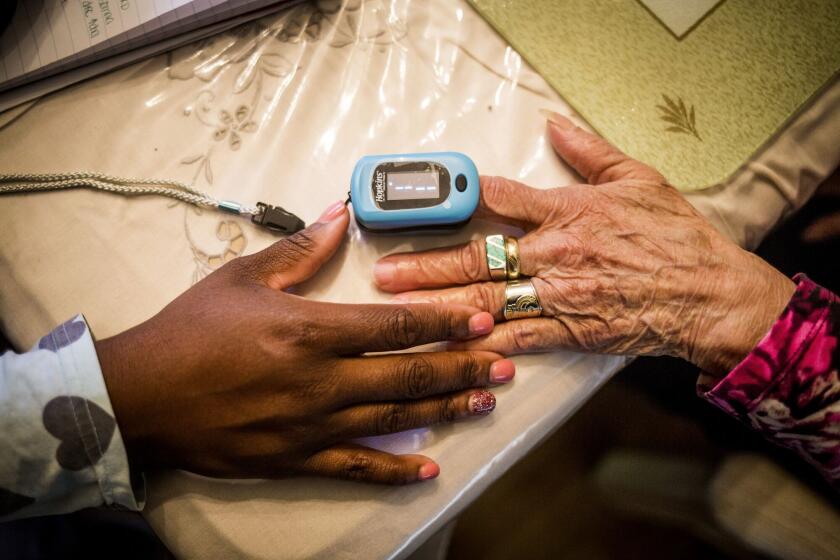AFL-CIO Chooses Power Over Image : ‘Big-Cigar Guys’ Win on Teamsters, but Did Labor Benefit?
- Share via
Like Mikhail S. Gorbachev’s account of the Stalinist terror, Jackie Presser’s tale of the travails of American labor isn’t really wrong--just incomplete.
“I think most of us in this room understand what’s taken place in America over the last 10 or 15 years,” Presser told the AFL-CIO convention as his Teamsters Union was welcomed back into the federation after an absence of three decades. “We’ve seen labor officials attacked, condemned, accused, ridiculed, indicted. We’ve seen everything happen.”
Well, yes, but as a catalogue of horrors, it comes up a bit short. The list somehow omits everything that befell rank and file workers during that same period: stagnating wages, the wholesale export of American industry overseas, illegal union-busting without fear of government intervention.
But these are mere footnotes in the texts of the Teamster leaders. For the past decade, they have placed the immediate interest of their topmost leadership--that is, the avoidance of Leavenworth--over that of their membership on the question of presidential endorsement. By no means are the Teamsters corrupt top to bottom. (In California, they are not only a clean union, but a generally progressive one.) But they are corrupt enough at the top that they have spent the 1980s endorsing the most anti-union President since William Howard Taft in the dim hope that this would save them from prosecution.
None of this comes as news to the men who run the AFL-CIO. Presumably, they had their reasons for taking the Teamsters back with no strings attached. For some, the logic of readmittance lay in the votes that the Teamsters will provide a candidate in the succession battle that will follow the Lane Kirkland presidency. In any event, the federation had its rationale ready when asked. “If it’s a choice between image and power,” said one leader, “I’ll take power any time.”
But the political power of American unions grows neither from guns nor goons, but rather from the public’s perception of the whole. Public mistrust of unions does not center around their ability to help their members: 60% of respondents to a 1986 NBC-Wall Street Journal poll thought that unions were good for their members. But when it comes to unions’ capacity to be a credible voice for American workers and American industrial democracy, their stature is greatly diminished. In a 1986 ABC-Washington Post poll, 52% of respondents believed that unions should have less influence; 73% thought that “labor unions get too much power or money for union leaders,” and 61% considered union leaders to be “out of touch with the workers they represent.”
The federation’s no-questions-asked embrace of the Teamsters will do little to bring these numbers down. Whether it be Presser’s annual $588,000 salary (about three times higher than that of any AFL-CIO union leader), or the leadership’s well-publicized misuse of members’ pension funds, the Teamsters have come to symbolize the narrowest form of self-interest: leadership vs. membership.
The show of unanimity that greeted the reaffiliation should not mislead. There are hundreds of secondary leaders and a number of international presidents who are sick about the reunion. In part, it’s a question of the way in which it was done: presented as a fait accompli to the executive council.
In part, though, it’s also a matter of undoing the progress the movement has made. Labor is no longer the old-boy network it was under George Meany. On April 25 of this year, demonstrators paraded through Washington to a rally against aid to the Nicaraguan Contras sponsored by the presidents of four of the federation’s five largest unions. Unions are increasingly female, black, and brown in their membership, and captained at the regional level either by veterans of the movements of the 1960s or by those whose thinking has been shaped by them.
Still, the image lingers on. Several years ago, the president of a nurses local in Boston was telling me that her efforts to involve her members more deeply in union affairs had run up against the image problem. This is a local whose leadership is feminist, progressive, democratic, hard-working--but the membership was saying, “You mean, we’re part of the guys with the big cigars?”
The guys with the big cigars won one in Miami, and but for the increased dues, it is hard to see how the federation gained. The claim of greater labor unity is mocked by the AFL-CIO’s internal disarray. When Carl Icahn can pit TWA pilots and mechanics against flight attendants, all of them members of different AFL-CIO unions, and successfully break the flight attendants, then the prospect of Teamster reaffiliation hardly portends the golden age of labor unity. The return of the Teamsters might also portend a reversion to the unchallenged rule of federation cold warriors, who were forced to strike compromises at the last two AFL-CIO conventions with the more liberal internationals.
Despite the claims of the conventional wisdom, the decline of American unions has played a key role in the decline of the American economy. The increasingly skewed distribution of our purchasing power makes it more likely that the crash will turn to recession. The down-skilling of American workers places us at a comparative disadvantage in the new global economy.
We suffer when unions are broken, and we suffer when union leaders stand before their peers and defend not their members but themselves.
More to Read
Inside the business of entertainment
The Wide Shot brings you news, analysis and insights on everything from streaming wars to production — and what it all means for the future.
You may occasionally receive promotional content from the Los Angeles Times.










